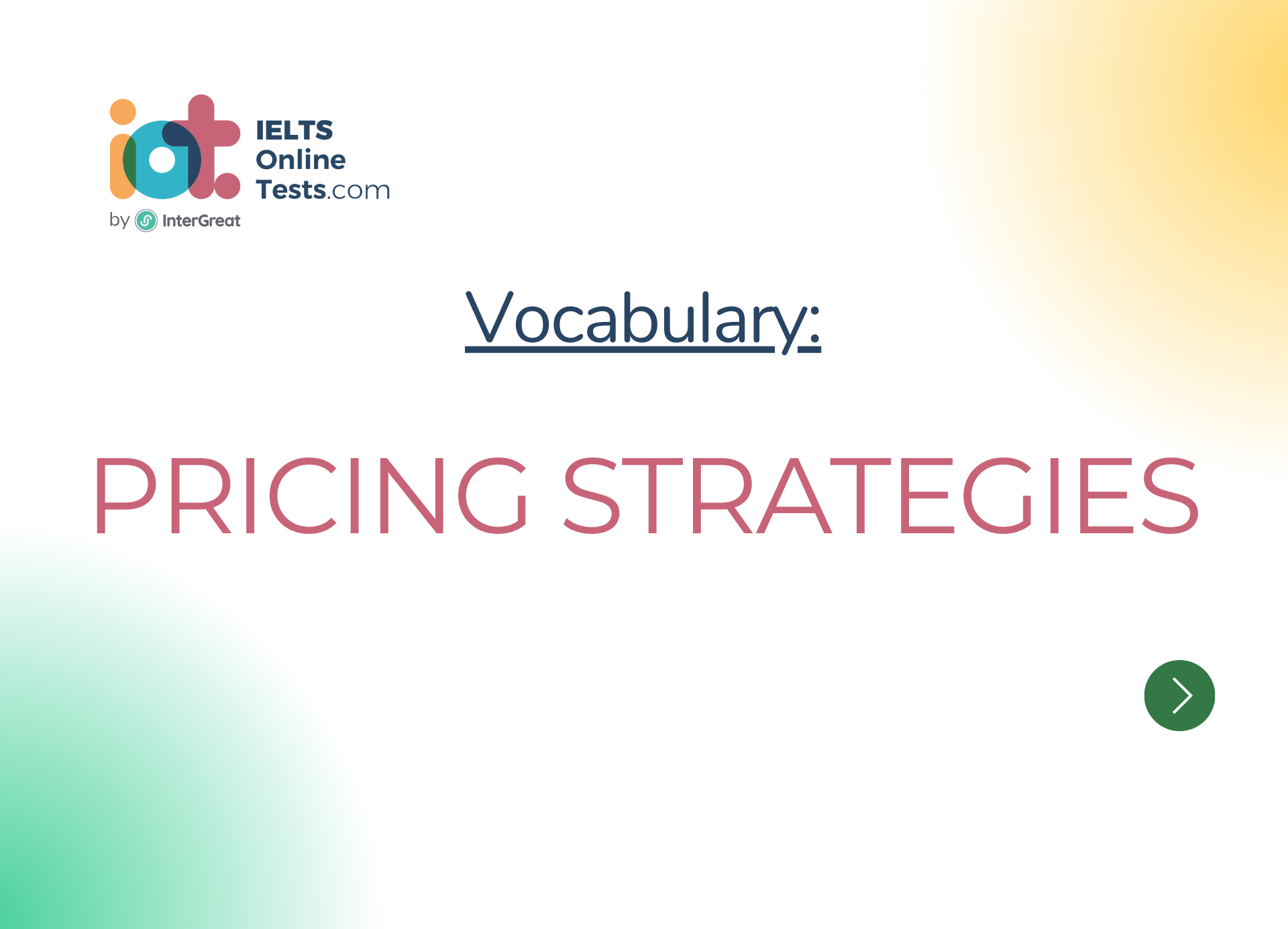
Pricing strategies
Below are some vocabulary words related to pricing strategies that can help you in the IELTS band scores 4.5-6.0:
Cost-Plus Pricing:
Setting the price by adding a markup to the cost of producing the product.
Penetration Pricing:
Offering a low initial price to quickly gain market share.
Skimming Pricing:
Setting a high initial price and gradually lowering it over time.
Competitive Pricing:
Setting the price based on the prices of competitors.
Value-Based Pricing:
Setting the price based on the perceived value of the product to customers.
Premium Pricing:
Setting a high price to create a perception of luxury and exclusivity.
Economy Pricing:
Offering products at low prices to appeal to price-sensitive customers.
Dynamic Pricing:
Adjusting prices in real-time based on demand and other market factors.
Bundle Pricing:
Offering multiple products or services together at a discounted price.
Psychological Pricing:
Setting prices just below a round number (e.g., $9.99) to create a perception of a lower price.
Price Discrimination:
Charging different prices to different customer segments based on their willingness to pay.
Promotional Pricing:
Temporarily reducing prices to stimulate sales or clear inventory.
Loss-Leader Pricing:
Offering a few products at a very low price to attract customers to purchase other, higher-priced items.
Geographical Pricing:
Setting different prices for products in different geographic regions.
Price Matching:
Matching the prices offered by competitors for the same product.
Cost Leadership:
Competing by offering the lowest prices in the market.
Price Elasticity:
A measure of how sensitive demand is to changes in price.
Dynamic Discounting:
Offering discounts for early payment or prompt settlement of invoices.
Target Pricing:
Setting prices to achieve a specific target or return on investment.
Predatory Pricing:
Setting very low prices with the intent to drive competitors out of the market.
Marginal Cost Pricing:
Setting the price equal to the additional cost of producing one more unit.
Price Hiking:
Raising prices suddenly and significantly.
Price War:
A situation in which competitors continuously lower prices to gain a competitive advantage.
Price Fixing:
Illegally colluding with competitors to set prices at a certain level.
Price Optimization:
Using data and algorithms to determine the best price for a product.
Resale Price Maintenance:
Setting a minimum price at which a product must be sold by retailers.
Price Gouging:
Unreasonably raising prices during times of crisis or emergency.
Value Pricing:
Setting prices based on the overall value delivered to customers.
Predatory Pricing:
Selling products at very low prices to eliminate competitors.
Price Control:
Government regulation of prices in certain industries.
Bundled Pricing:
Offering a package of products or services together at a single price.
Freemium Pricing:
Offering a basic version of a product for free and charging for premium features or upgrades.
Two-Part Pricing:
Charging customers a fixed fee plus a variable fee based on usage or quantity.
Razor-Blade Model:
Selling a primary product at a low price and profiting from the sales of related consumable products.
Price Skimming:
Setting a high initial price to target early adopters and then gradually lowering the price to attract more price-sensitive customers.
Pay What You Want (PWYW):
Allowing customers to pay any amount they choose for a product or service.
Competition-Oriented Pricing:
Setting prices based on the prices charged by competitors.
Loss Minimization Pricing:
Setting prices to minimize losses in a declining market.
Cost Leadership:
Competing by offering the lowest prices in the market.
Perceived-Value Pricing:
Setting prices based on the value that customers perceive in the product.
Remember to practice using these words in various sentences and scenarios to enhance your vocabulary and language skills. Good luck with your IELTS preparation!




